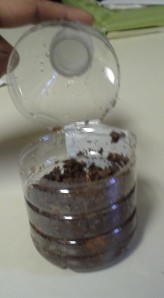So, summer is here. The beach, the park, the water park, the pool, outdoor games, gardening etc. What do these all have in common?
The SUN!
Okay, now what comes with the sun? All those warm rays that many like to soak up, and some of us don’t but have to anyway! What is in those rays? UVA and UVB (ultraviolet rays, those pesky skin cancer causing rays that are a part of the Electro Magnetic Spectrum which provides us with other useful “stuff” like visible light, radio waves, microwaves, X-rays etc.).
So, to reduce the chances of getting skin cancer and ending up with wrinkly, leathery skin, we slather on oodles of sunscreen. What’s wrong with sunscreen you ask? Well, depending on the type of sunscreen you use, looks like the chances of reducing cancer is not really real.
Most people probably follow the basic rules of using sunscreen as shown at the Skincancer website. The times that we have used products, we try to buy ones with fewer ingredients, but last year, new rules were put out by the FDA regarding sunscreen so I decided to do some more research into sunscreens and here is what I’ve found:
- Cancer rates have tripled over the last 35 years
- FDA doesn’t have stringent guidelines for cosmetics as they do for drugs
- FDA rules are outdated (the wheels at most Federal agencies seem to grind oh-so-slowly!)
- Most sunscreens contain toxic ingredients like Vitamin A (surprise!) listed as retinol or retinyl anything, oxybenzone and nano-particles (used to reduce that white sunscreen look)
- Fragrances are either toxic or increase allergies (we should all know this from years of hearing about it)
- Bigger is not always better – at least not when it relates to SPF numbers!
Here are some brands that have a lower level of toxicity – Badger has 13 products, All Terrain has 6 products, Coppertone has 4 products, Aubrey Organics and Nature’s Gate have 3 products each and Burt’s Bees and Jason Naturals have 1 product each. I stopped off at my large national chain grocery store today, and found exactly 1 product that fit the description (but, I will admit that I randomly picked up only about 15 items).
The Environmental Working Group (I am leery of the ulterior motives of sites strongly for or against something especially when they are labelled environmental, but still decided to use them as they have been quoted everywhere; I’d like to think there was some grain of truth to it) has done product reviews for the last seven or so years and every year they come up with recommendations. Before you head out on that beach vacation, at least take a quick peek at their site and find some relatively less toxic sunscreens.
Enjoy your summer vacation, use a decent sunscreen, wear UPF clothing (similar to SPF but it’s the moniker for clothes) if possible to the beach, cover up with a hat, get that Vitamin D your body so needs and have a wonderful time!
NB: I get no kickback from anyone for mentioning their sites or products. Opinions stated are my own based on what have found online.


